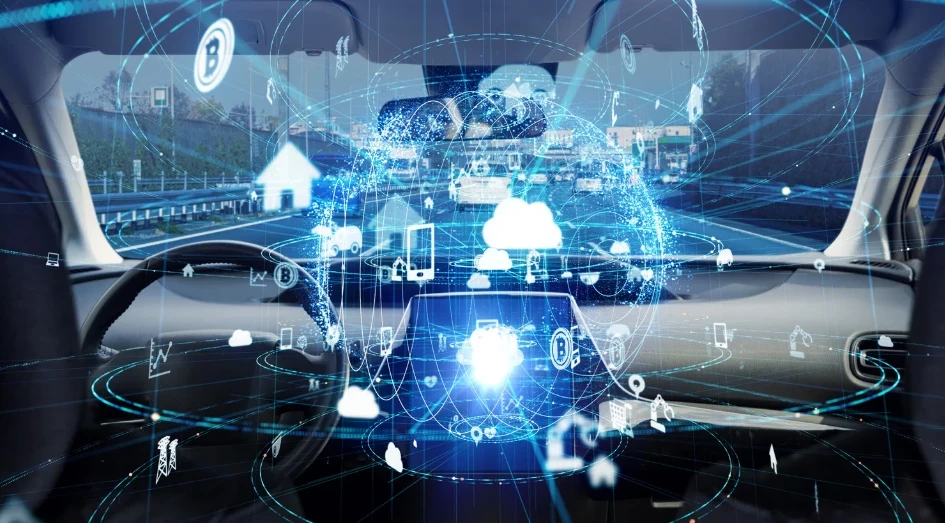Car lovers Paradise: The new world of class
Add bookmarkThe potential for combining the new science of digital technology with the old mechanisms of automobile transportation is growing so rapidly it is difficult to keep up. While most industry observers are entirely distracted by the idea of automated vehicles, the true advancements are far more likely to involve vehicles in which at least one person is a driver.
Truth be told, the combination of a human being and an automated machine is likely to produce better results than the machine itself. It's also probably at least two orders of magnitude less expensive. So what is likely to happen to cars in the near future? Are there any obvious trends in 2018 for driver-operated cars, and if so, how can the average vehicle enthusiast take advantage of them.
The Rise of the Cobots
Full automation brings with it immense economies of scale. It also brings the ever-present potential of a factory that goes dark because a stuffed animal is left in the field of view of the wrong proximity sensor. The fundamental difference between the human mind and the binary decision making processes of what is often inaccurately called "artificial intelligence" is exactly the same as the difference between logic and intuition.
Image: Tech News Today
Human beings have the ability to do what computers never can: they can discard an enormous volume of decision nodes at a glance because they don't make sense. Computers, on the other hand, constrained by their reliance on binary math, must evaluate the entire namespace. However, when computers and humans cooperate, instant data analysis can be focused on a tiny fraction of possible outcomes. The industry name for this kind of teamwork is "cobot."
Consider just one example of a robot and a car working together with their driver. What if a vehicle's engine could diagnose itself and physically disassemble to make it easier for the human to fix the problem without the help of a mechanic? Imagine the peace of mind for the driver if they knew the car could assist them in fixing a flat tire?
Now imagine the vehicle factory helping a manufacturing specialist design and build that assisted repair mechanism. The industry is already there.
Super Cruise
The advent of ground-level LIDAR and sophisticated mapping circuitry will bring a new kind of cruise control to multi-lane highways in 2018. Vehicles so equipped will not only be operable without steering or pedals, but will continuously monitor both the exterior and interior of the vehicle for any potential hazards. Leaving aside the semi-autonomous nature of the system, the safety features of this technology alone are worth the extra time and expense.
Image: https://bit.ly/2IqLSKH
A super cruise-assisted car will be able to monitor the attentiveness of the driver using an internal camera. Alarms will sound if the car believes the driver is not prepared to take control in an emergency and, in extreme circumstances, the car will bring itself to a controlled stop and notify first responders in the event the driver is completely unresponsive.
This technology will maintain safe distance in all directions, can change lanes on its own and is likely to produce considerable fuel savings due to the controlled nature of its acceleration and braking.
Voice Activated Transportation
The undisputed sleeper hit technology of 2017 was undoubtedly the voice-activated home personal assistant. So successful were the manufacturers and retailers of these devices they rearranged their marketing plans to feature them in a Super Bowl commercial.
Major vehicle manufacturers, especially those who market the best cars have already teamed up with technology companies to bring voice activated control to vehicles in much the same way they are already delivering satellite radio, Wi-Fi hotspots, mobile phone service and even video screens with on-demand content.
Image: https://bit.ly/2GAgRaE
The mobile phone component has always been one of the industry's major sticking points. With most states now ticketing drivers who use their phones while driving, the goal has always been to allow use of all the communication possibilities of mobile phones without requiring handheld controls.
The voice interface promises to create the bridge between drivers and their mobile phones as seen in some of the latest models. Not only will it be possible to make calls, but if the voice interface is as sophisticated in the vehicle as it is in the home, it might even be possible to control more than just phone calls and texts. The company that opens up mobile app interfaces to voice control will have created an entirely new market for both advertising and software.
It was Scientific American that announced in 1909 that the automobile had reached its zenith in terms of innovation and technological advancement. While we may chuckle at these 100 years later, it is hard to look at the vehicles of today and not wonder just how much further they can really advance. One thing is certain, however. Car lovers have a lot to anticipate.
Sources:
- http://www.dailymail.co.uk/sciencetech/article-3524682/The-car-fixes-Hyundai-concept-vehicle-spots-faults-repairs-driver-knows-problem.html
- https://blog.universal-robots.com/cobots-in-the-automotive-industry-universal-robots
- https://www.forbes.com/forbes/welcome/?toURL=https://www.forbes.com/sites/jimgorzelany/2017/08/25/10-breakthrough-new-car-features-coming-for-2018/&refURL=&referrer=
- https://www.wordstream.com/blog/ws/2018/03/01/voice-assistants
- https://www.gurleymotor.com/Artificial-Intelligence-Gallup-NM
- https://clearbridgemobile.com/artificial-intelligence-driving-future-mobile-app-personalization/





















